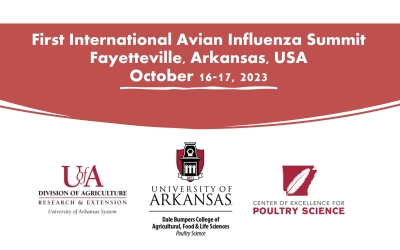Current situation of avian influenza due to the highly pathogenic subtype A/H5N1 in Mexico
Authors: Miguel A. Márquez
GMPC TOP
2023.
vol. 3, Iss. 1
pp:0-13
Doi: https://doi.org/10.51585/gtop.2023.1.0016

Abstract:
The first report of news of an epizootic of Avian Influenza (AI) occurred in the neighborhoods of the city of Turín, Italy, in family poultry farms in 1878, which resulted in high mortality rates. The infection spread to the north and west of Europe, ending a year later in England. It was the distinguished Italian veterinarian Edoardo Bellarmino Perocitto (1847-1936), who created a detailed clinical, pathological, and epidemiological description of this viral infection of birds. In 2014, a virus emerged that has since commanded the attention of researchers. This virus was isolated from a domestic goose in Guangdong, China, and was classified as A/Goose/Guandong/1/14. This line sparked a strong focus among avian pathologists because, since its appearance, it has caused death in domestic and wild birds and has spread to more than 76 countries in Asia, Europe, North America, and South America. It is well known that migratory aquatic birds are the main actors in the ecology of Orthomyxoviruses of Avian Influenza. IA is caused by an Orthomyxovirus whose envelope contains surface glycoproteins: Hemagglutinin (HA) and Neuraminidase (NA). Types A, B, and C are isolated from animals. Types B and C have been isolated from man. Type A viruses are capable of infecting birds, humans, horses, and other mammals. The incubation period of AI Orthomyxoviruses is one to seven days and clinically causes a severe congestive-hemorrhagic respiratory, intestinal, and neurological condition, with mortality rates of 90 to 95\% and mortality rates of 95 to 100\%. Both Avian Influenza and Human Influenza have a seasonal presentation during the autumn and winter months of each year. Currently, the AI viruses H5N1 and H7N9 are zoonotic. Asian strain subtypes with greater impact on the health of people and their origin have occurred due to the spread between different species of wild birds, domestic and productive birds, and the people who take care of them and sell them. The global situation of Avian Influenza, a cross-border disease, continues to threaten the health of birds in practically all countries under agreement with the World Organization for Animal Health (OMSA/OIE). From 2021 to December 2022, more than 8,142 outbreaks of Highly Pathogenic Avian Influenza H5N1 appeared in 76 countries on four continents, affecting more than 120 million birds. The poultry industry in the United States of America has slaughtered more than 60 million commercial, domestic, and free-range birds (chickens, turkeys, and ducks), and wild birds between 2022-2023. This serious and worrying situation at a global level means that the World Animal Health Organization located in Paris, France, organized a meeting with all countries affected by AI in October 2022, during which it was concluded and authorized in an unprecedented decision for the first authorizing vaccination against AI in affected countries and publishing a manual “OIE Vaccination: A tool for the control of Avian Influenza.
Keywords:
Influenza, Epidemiology, Mexico, Poultry, Control, Vaccination
Statistics:
Article Views: 1144
PDF Download: 9